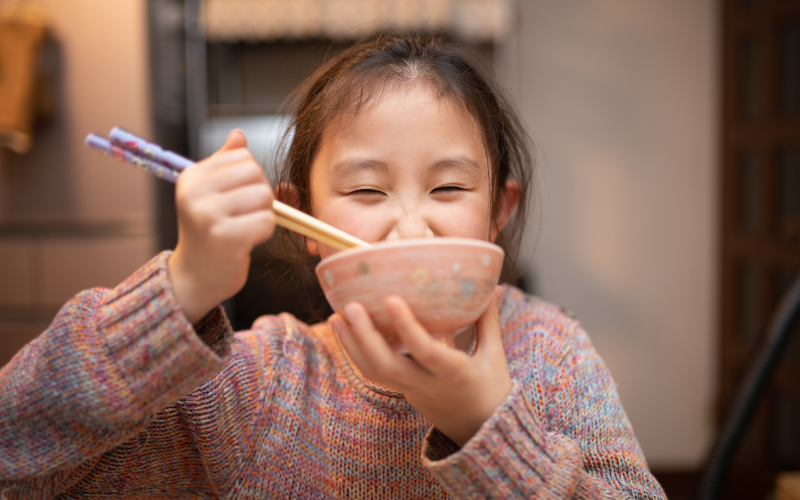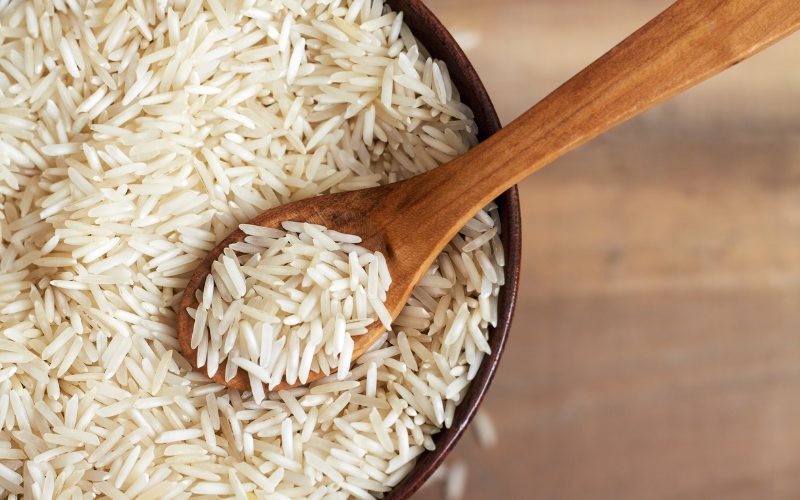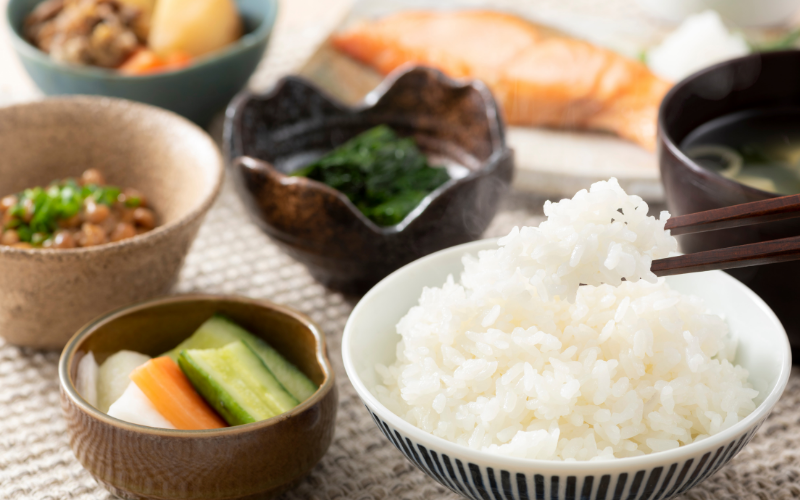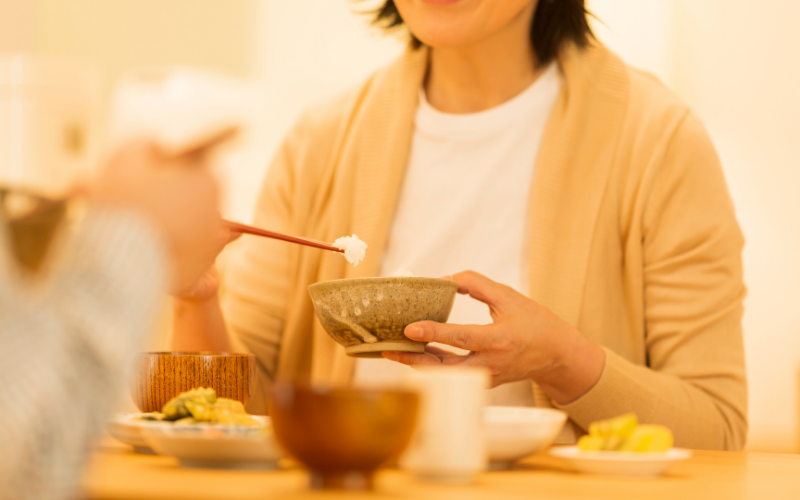During my travels, I’ve encountered a wide variety of rice dishes. From fragrant Indian biryanis to savory Japanese sushi, rice is a staple in many cuisines around the world. However, as I traveled to different countries, I often found myself wondering: How much rice per person is the right amount?
It can be difficult to know the appropriate serving size, especially when dining in groups. That’s why I decided to research and compile a comprehensive guide on how much rice per person. Whether you’re cooking for one or a large family, this guide will provide you with the information you need to serve the perfect portion of rice every time.
How much rice per person?

The appropriate amount of rice per person can vary depending on a number of factors, including age, gender, activity level, and cultural norms. How much cooked rice per person? In general, a serving of cooked rice is about 1/2 cup or 90 grams.
However, some people may require larger or smaller servings based on their individual needs. When cooking for a group, it’s important to consider the number of people you are serving and adjust your rice portions accordingly.
How much raw rice per person?

The amount of raw rice per person can vary depending on the recipe and serving size. As a general rule of thumb, a standard serving of cooked rice is about 1/2 to 3/4 cup.
Therefore, if you’re estimating how much raw rice you need per person, you can assume that 1/4 to 1/3 cup of uncooked rice will yield a standard serving size of cooked rice.
Why it’s important to know how much rice to cook per person?
Knowing how much rice to cook per person is important for several reasons. Firstly, it helps to avoid food waste by ensuring that you don’t cook too much or too little rice.
Secondly, it helps to ensure that each person is getting the appropriate amount of food for their needs, whether they are children, adults, or athletes.
Additionally, understanding the factors that affect rice serving sizes, such as cultural norms and dietary requirements, can help you to be more sensitive and accommodating when cooking for diverse groups of people.
Cultural differences in rice serving sizes, for example, can vary widely around the world, and it’s important to be aware of these differences to avoid over or underfeeding guests. By understanding the cultural factors that influence rice consumption, you can also gain a deeper appreciation for the role that rice plays in different societies and cuisines.
Understanding rice serving sizes

Understanding rice serving sizes is crucial for cooking the right amount of rice for each individual or group. A serving of cooked rice is typically about 1/2 cup or 90 grams.
To measure rice servings, you can use a measuring cup or a kitchen scale. Recommended rice serving sizes can vary based on age, gender, and activity level.
For example, active individuals may require larger servings to meet their energy needs. According to the USDA, recommended rice serving sizes for adults are about 1/2 to 1 cup per meal, depending on their calorie requirements.
Children may require smaller servings, with recommendations ranging from 1/4 to 1/2 cup depending on their age and activity level. When you understand recommended rice serving sizes, you can ensure that you are providing the appropriate amount of rice for each individual’s needs.
Calculating rice portions
Calculating rice portions for a group can seem daunting, but it’s actually quite simple once you know how much rice to cook per person. To calculate rice portions for a group, multiply the recommended rice serving size by the number of people you are serving.
For example, if you are cooking for a group of 10 people and the recommended serving size is 1/2 cup per person, you would need to cook 5 cups of rice in total. It’s also a good idea to factor in some extra rice for leftovers or second servings.
If you have leftover rice, you can adjust your portions accordingly. For example, if you have 2 cups of leftover rice, and you are cooking for 4 people, you can divide the rice evenly among the group, providing each person with 1/2 cup of rice.
Adjusting rice portions for second servings is also important, as some people may want to take more rice after their initial serving. By being flexible and accommodating, you can ensure that everyone gets the appropriate amount of rice without wasting food.
Cooking rice for one
Cooking rice for one person may seem like a challenge, but it’s actually quite simple.
- To cook rice for one person, use a 1:2 ratio of rice to water, meaning one cup of rice to two cups of water.
- Rinse the rice in a fine mesh strainer and add it to a pot with the measured water.
- Bring the water to a boil, then reduce the heat to low, cover the pot, and let the rice simmer for about 18-20 minutes, or until the water is absorbed and the rice is tender.
If you have leftover rice, it’s important to store it properly to avoid spoilage. Allow the rice to cool to room temperature, then transfer it to an airtight container and store it in the refrigerator for up to 4–5 days.
To reheat leftover rice, add a few tablespoons of water to the rice and microwave it in a covered bowl for 1–2 minutes, or until heated through.
Alternatively, you can reheat leftover rice on the stovetop by adding a splash of water and heating it over low heat, stirring occasionally until heated through.
Cooking rice for a family

Cooking rice for a family can be a challenge, but with the right techniques, it can be a breeze. Here are some tips for cooking rice for a family:
- Use a large pot: A large pot is essential for cooking rice for a family, as it allows you to cook a larger quantity of rice at once.
- Use the right ratio: For white rice, use a 1:2 ratio of rice to water. For brown rice, use a 1:2.5 ratio.
- Stir the rice: Stirring the rice occasionally while cooking can help prevent sticking and ensure even cooking.
- Don’t lift the lid: Lifting the lid while the rice is cooking can release steam and affect the cooking process.
- Cook in bulk: Cooking rice in bulk is a great way to save time and have leftovers for future meals. To cook rice in bulk, simply multiply the recipe by the desired number of servings.
When cooking rice in bulk, you may want to consider using a rice cooker. Rice cookers are a convenient and easy way to cook large quantities of rice, and they can also keep the rice warm until you’re ready to serve it.
However, if you don’t have a rice cooker, stovetop cooking works just as well.
How much uncooked rice to use for side dishes?
Sure, here is a table for the amount of uncooked rice to use for side dishes:
| Number of Servings | Amount of Uncooked Rice |
| 1-2 | 1/2 cup |
| 3-4 | 1 cup |
| 5-6 | 1 1/2 cups |
| 7-8 | 2 cups |
| 9-10 | 2 1/2 cups |
Note: These serving sizes are approximate and may vary depending on individual needs and preferences. It’s always a good idea to measure rice portions accurately to avoid food waste and ensure that each person gets the appropriate amount of rice for their needs.
How much uncooked rice to use for main dishes?
Certainly! Here is a table for the amount of uncooked rice to use for main dishes:
| Number of Servings | Amount of Uncooked Rice |
| 2-3 | 1 cup |
| 4-6 | 2 cups |
| 8-10 | 4 cups |
| 12-14 | 6 cups |
| 16-18 | 8 cups |
Common mistakes to avoid
When it comes to cooking rice, there are several common mistakes that can easily be avoided. Here are some mistakes to watch out for:
- Overcooking or undercooking rice: Overcooked rice can become mushy and lose its texture, while undercooked rice can be tough and crunchy. To avoid this, be sure to follow the recommended cooking times and check the rice frequently while it’s cooking.
- Incorrectly measuring rice portions: Measuring rice portions incorrectly can result in servings that are too large or too small. Use measuring cups or a kitchen scale to ensure accurate portions.
- Serving too much or too little rice: Serving too much rice can lead to food waste, while serving too little can leave guests feeling hungry. Be sure to follow recommended serving sizes and adjust portions as necessary.
How much rice per person is healthy?
People wonder “how much rice per person healthy”, and rice can be a healthy addition to any diet when consumed in moderation and paired with other nutrient-rich foods. The appropriate amount of rice per person for weight loss or a healthy diet can vary depending on factors such as age, gender, and activity level.
Choosing the right type of rice is also important for a healthy diet. Brown rice is a whole grain and contains more fiber and nutrients than white rice. Basmati and jasmine rice are also good options, as they have a lower glycemic index and are less likely to cause blood sugar spikes.
Rice can also be a source of carbohydrates in a balanced diet. However, it’s important to monitor carbohydrate intake and choose complex carbohydrates, such as those found in whole-grain rice, rather than refined carbohydrates.
Incorporating rice into a healthy diet in appropriate serving sizes and choosing nutrient-rich varieties, you can enjoy the health benefits of this versatile and delicious food.
Special diets
Rice is a versatile food that can be enjoyed by those following a variety of special diets. Here are some options to consider:
- Gluten-free rice options: Rice is naturally gluten-free, making it a great choice for those with celiac disease or gluten intolerance. Some gluten-free rice options include white rice, brown rice, black rice, and wild rice.
- Rice for vegan and vegetarian diets: Rice is a staple in many vegan and vegetarian diets as it is a good source of carbohydrates and can be paired with a variety of plant-based proteins. To boost the protein content of rice dishes, consider adding beans, tofu, or tempeh.
- Low-carb rice alternatives: For those on a low-carb or ketogenic diet, traditional rice may not be an option. However, there are several low-carb rice alternatives available, such as cauliflower rice, konjac rice, and shirataki rice. These alternatives can be used in place of traditional rice in a variety of dishes.
Cost and budgeting
The cost of different types of rice can vary depending on factors such as location, brand, and quality. Generally, white rice tends to be less expensive than brown rice or specialty rice varieties such as jasmine or basmati.
However, the cost of rice can still be affordable, and there are many budget-friendly ways to incorporate rice into meals. Here are some ideas:
- Use rice as a base for meals: Rice can be used as a base for a variety of dishes, such as stir-fries, curries, and grain bowls. By incorporating other affordable ingredients such as vegetables, beans, and eggs, you can create nutritious and flavorful meals without breaking the bank.
- Buy rice in bulk: Buying rice in bulk can be a cost-effective way to save money on this staple food. Look for deals at your local grocery store or consider shopping at a bulk food store.
- Experiment with different rice varieties: While some specialty rice varieties can be expensive, others, such as brown rice or black rice, can be affordable and provide additional health benefits. Experimenting with different rice varieties can add variety to your meals without breaking the bank.
FAQs
How long can I keep cooked rice in the fridge?
It’s important to note that cooked rice can be a breeding ground for bacteria if it is left at room temperature for too long. To avoid this, be sure to refrigerate leftover rice promptly, ideally within 1-2 hours of cooking. If you have a large batch of rice that won’t be eaten within a few days, consider freezing it for later use.
When reheating leftover rice, be sure to add a few tablespoons of water to the rice and microwave it in a covered bowl or reheat it on the stovetop. By following these tips, you can enjoy leftover rice safely and avoid food waste.
Can I freeze cooked rice?
Yes, you can freeze cooked rice for later use. Allow the rice to cool to room temperature, then transfer it to a freezer-safe container or resealable plastic bag. Freeze the rice for up to 1 month.
To thaw frozen rice, remove it from the freezer and allow it to defrost in the refrigerator or microwave it with a few tablespoons of water.
To know if rice is cooked properly, check the texture and taste. Properly cooked rice should be tender and fluffy, with individual grains that are separate and not clumped together. The texture should be firm but not crunchy or mushy.
The best way to test if rice is cooked properly is to taste it. If the rice is still hard or chewy, it needs more time to cook. If the rice is mushy or overcooked, reduce the cooking time next time. By experimenting with cooking times and techniques, you can achieve perfectly cooked rice every time.
How do I know if rice is cooked properly?
It is not recommended to eat undercooked rice, as it can contain harmful bacteria such as Bacillus cereus. Eating undercooked rice can cause food poisoning and lead to symptoms such as nausea, vomiting, and diarrhea. It’s important to ensure that rice is cooked properly before consuming it.
Is it safe to eat undercooked rice?
It is not recommended to eat undercooked rice, as it can contain harmful bacteria such as Bacillus cereus. Eating undercooked rice can cause food poisoning and lead to symptoms such as nausea, vomiting, and diarrhea. It’s important to ensure that rice is cooked properly before consuming it.
How much water should I use when cooking rice?
When cooking rice, the amount of water needed can vary depending on the type of rice and the desired texture. As a general guideline, a 1:2 ratio of rice to water is recommended for white rice, and a 1:2.5 ratio is recommended for brown rice. For example, to cook 1 cup of white rice, you would use 2 cups of water.
However, it’s always a good idea to consult the specific cooking instructions for the type of rice you are using to ensure that you are using the correct amount of water. By measuring accurately and following cooking instructions, you can ensure that your rice turns out perfectly cooked every time.
See more: How to Microwave Brown Rice?
Can I substitute cauliflower rice for traditional rice?
Yes, you can substitute cauliflower rice for traditional rice. Cauliflower rice is a low-carb, low-calorie alternative to traditional rice that is made by pulsing cauliflower in a food processor until it reaches a rice-like consistency.
It can be used in a variety of rice-based dishes and is a great option for those looking to reduce their carbohydrate intake. Keep in mind that the texture and flavor of cauliflower rice may be different from traditional rice, so it’s important to experiment with cooking techniques and seasonings to find what works best for your preferences.
Can I use chicken broth instead of water to cook rice?
Yes, you can use chicken broth instead of water to cook rice. Chicken broth can add flavor and depth to rice dishes and is a great option for those who want to add a savory twist to their rice. Keep in mind that chicken broth may contain sodium, so it’s important to adjust the seasoning of the dish accordingly.
Can I cook rice in the microwave?
Yes, you can cook rice in the microwave. To do so, combine rice and water in a microwave-safe dish and microwave on high for about 10–15 minutes, or until the rice is tender and the water has been absorbed.
However, it’s important to note that microwave cooking times can vary depending on the wattage of the microwave, so it may take some experimentation to find the right cooking time for your specific appliance.
Can I mix different types of rice together?
Yes, you can mix different types of rice together. Mixing different types of rice can add variety and texture to rice dishes, and is a great way to use up leftover rice.
Some popular rice combinations include mixing white rice with brown rice or wild rice, or mixing jasmine rice with basmati rice. Keep in mind that different types of rice may have different cooking times and water ratios, so it’s important to adjust the cooking method and seasonings accordingly.
How much rice for 4 people?
If each person typically consumes about 1 cup of cooked rice, you would need approximately 1/3 to 1/2 cup of uncooked rice per person. For 4 people, this would be approximately 1 1/3 to 2 cups of uncooked rice (approximately 4 cups of cooked rice).
Conclusion
For the most part, knowing how much rice per person is an important part of meal planning and can help you avoid food waste and ensure that each person gets the appropriate amount of rice for their needs. Factors such as age, gender, and activity level can all influence the recommended serving size of rice per person, and it’s important to measure rice portions accurately to avoid under or over-serving.
Cooking rice can be done in a variety of ways, including on the stovetop, in a rice cooker, or even in the microwave. Additionally, there are many types of rice to choose from, each with its own unique flavor and texture.
By understanding serving sizes, measuring accurately, and experimenting with different cooking techniques and rice varieties, you can create delicious and nutritious rice dishes that are perfectly portioned for your needs. And with budget-friendly strategies and tips for storing and reheating leftover rice, you can enjoy this versatile and affordable staple food in a variety of ways.
Read more
- Cooking Vietnamese Sticky Rice at Home
- Vietnamese Fried Rice (Com Chien)
- Black Sticky Rice Dessert with Mango